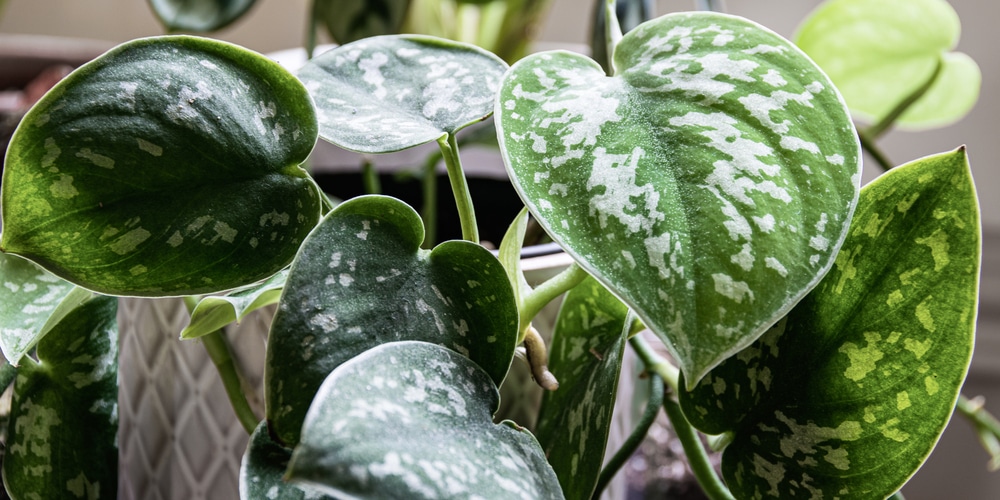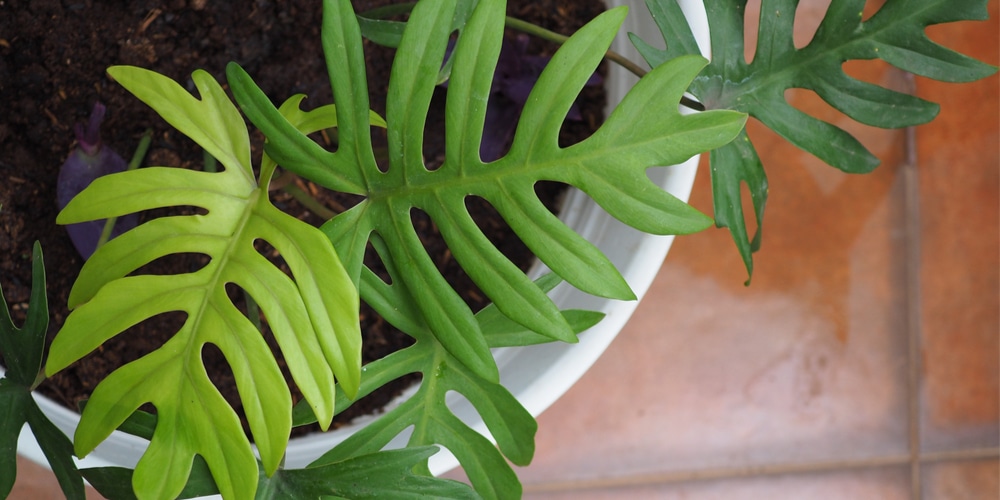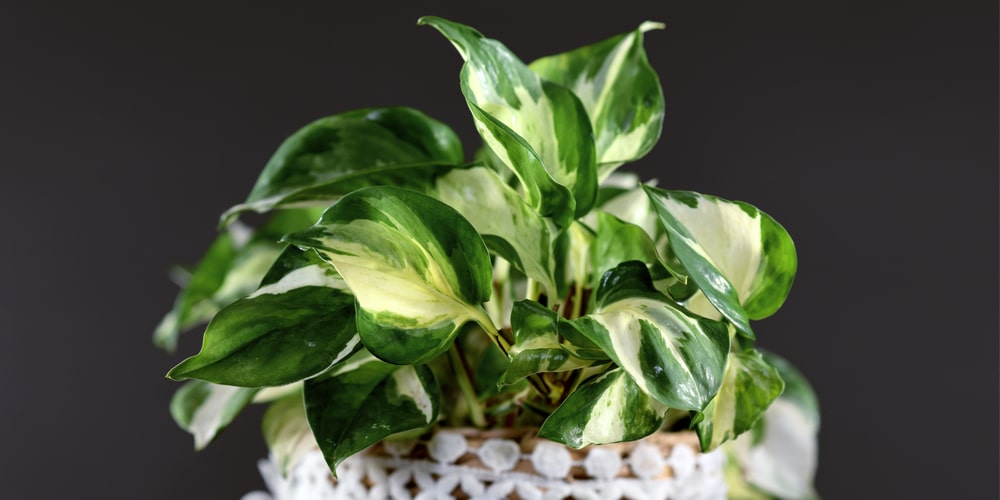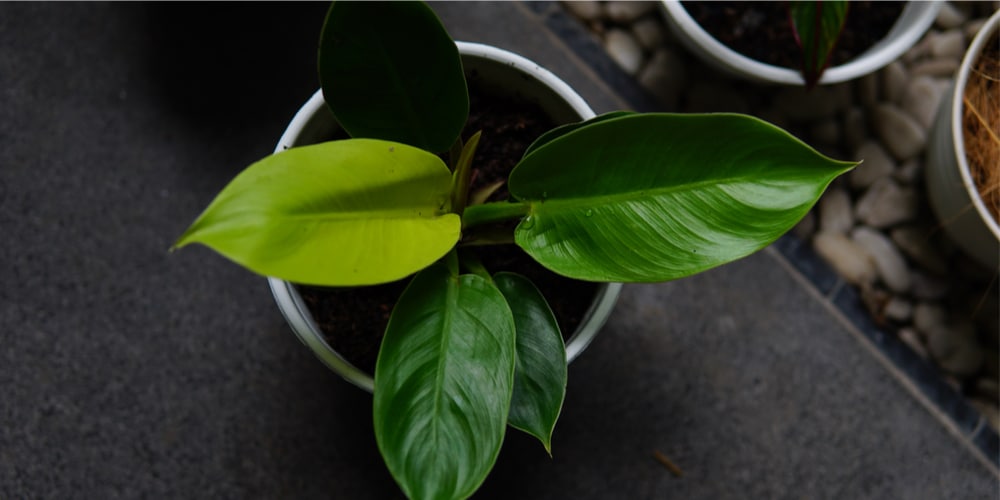Tropical houseplants add color and life to any space, but it can be challenging to know which one to choose. Two of the most popular tropical plants are pothos and philodendrons.
These plants have similar care needs and are low maintenance and very forgiving, making them great for beginners. There are many different varieties of pothos and philodendrons, and they vary in appearance and size. It’s a good idea to do your research before deciding which plant is right for you. Let’s look at the differences and similarities of pothos vs. philodendron plants.
Pothos vs. Philodendron

Pothos and philodendrons are both members of the Araceae family. Pothos are native to tropical Asia, while philodendrons originate from South America, particularly from the Brazilian rainforests.
Pothos and philodendrons are both popular houseplants that can thrive in low to medium light situations with frequent watering. However, both these plants prefer bright indirect sunlight.
Pothos vs. Philodendron: Appearance

Pothos vines are smaller, making them great for planting in hanging baskets to cascade down the sides. Keep pothos plants pruned back to shape them, or let them grow freely for a more natural appearance. Pothos vines are often solid green with some variegation of yellow, white, or cream tones throughout the leaves. Pothos plants also come in larger varieties, which can be great for growing outdoors in the right climate. Most indoor pothos will stay smaller and bushy. Pothos is a plant with heart-shaped leaves that can be either variegated or solid green.
Philodendrons are larger plants with broad leaves that are often glossy green and heart-shaped. Some varieties have elongated or spit leaves. Philodendron has large, glossy
green leaves that grow out of a central rosette, often with vines trailing below the plant like ivy. They can climb or be trained to stay in one spot. Varieties of philodendrons come in different colors like pink, orange, white, yellow, brown, or even spotted or striped leaves.
Both plants are tropical and aren’t very cold tolerant. They can be grown outdoors in USDA zones 10 to 11. In milder climates, you can move tropical plants outdoors for the summer, but be careful not to leave them outdoors if frost is expected. Philodendrons are particularly sensitive to the cold and can quickly die when exposed to frost.
Toxicity

Pothos and philodendron can cause irritation to the mouth and stomach if eaten and are considered toxic to animals and humans. These plants both contain calcium oxalate, which can cause an unpleasant burning sensation in the mouth and throat if eaten. Be careful when handling tropical plants, as they can also cause skin irritation and allergic reactions in some people.
Pothos vs. Philodendron: Growth and Care

Pothos vs. philodendron care is similar as both require bright to indirect sunlight and frequent watering. Pothos tends to be more tolerant of neglect and is a slightly hardier plant. Pothos is an excellent plant for new gardeners as it can thrive even when neglected or under-watered. These plants are drought tolerant. Philodendrons will not respond well to this type of treatment, and it is important to make sure they get enough water.
Watering requirements
Both the philodendron and pothos respond best when you use a soak and dry method of watering. This means that you should give your plant a good watering and then leave it to dry out. Test the soil with your finger to check whether the top two inches of soil is dry before watering again. You may find that pothos plants need slightly more water than philodendrons (make sure not to overwater a pothos), but it will depend on the size of the plant and pot and the variety of plant. Water regularly while the plant is growing and cut back during dormancy in the fall and winter months.
Soil
Philodendron and pothos both thrive in soil that’s loose and well-draining. Add some peat moss, vermiculite, or perlite to a standard houseplant mix is beneficial for these plants. You can also add a layer of stones or gravel to the bottom of
the pot to help with drainage. Philodendrons like soil that’s neutral or slightly acidic and has a pH range between 5.0 and 7.0. Pothos also likes neutral or acidic soil but is more forgiving and can cope with soil outside of its recommended pH range of 6.1 to 6.7.
Fertilization
Provide your plant with a liquid fertilizer once a month throughout the growing season. Most professional gardeners recommend using a liquid fertilizer at half the recommended strength for a philodendron.
Humidity
As pothos and philodendrons are both tropical plants, they like high humidity. Philodendrons originate from a very humid area and need a humidity of between 50 and 85%, while pothos requires slightly less humidity. As long as the humidity is at least 50%, both these plants will thrive. You can increase the humidity for your plant by misting the leaves, grouping tropical plants, or using a pebble and water tray. Alternatively, you may like to invest in a humidifier.
Pothos vs. philodendron: Differences
One of the main differences between the two plants comes down to size. While these plants can both grow up to 15 feet, pothos will remain smaller and more compact as it grows. That being said, some varieties of Pothos can grow up to 20 feet in height.
Pothos vines are often smaller as well, making them an excellent option for hanging baskets or medium-sized containers. Philodendrons tend to be larger and require large containers or planters for support. Many species of philodendron climb trees in their natural rainforest environment. There are even some that can live as air plants if their connection to the ground is severed. Philodendrons grow aerial roots to help them climb.
Conclusion
Now that we’ve compared pothos vs. philodendron, both of these plants are great for adding a splash of color to your home! They add the perfect tropical touch and can brighten up any space. There are many different varieties of each plant, so you can be sure to find one that fits your home or office décor. Philodendrons come in a wide range of sizes, heights, and colors. Both plants are easy to grow and require bright indirect light and infrequent watering, but pothos tends to be more tolerant of neglect than philodendrons.